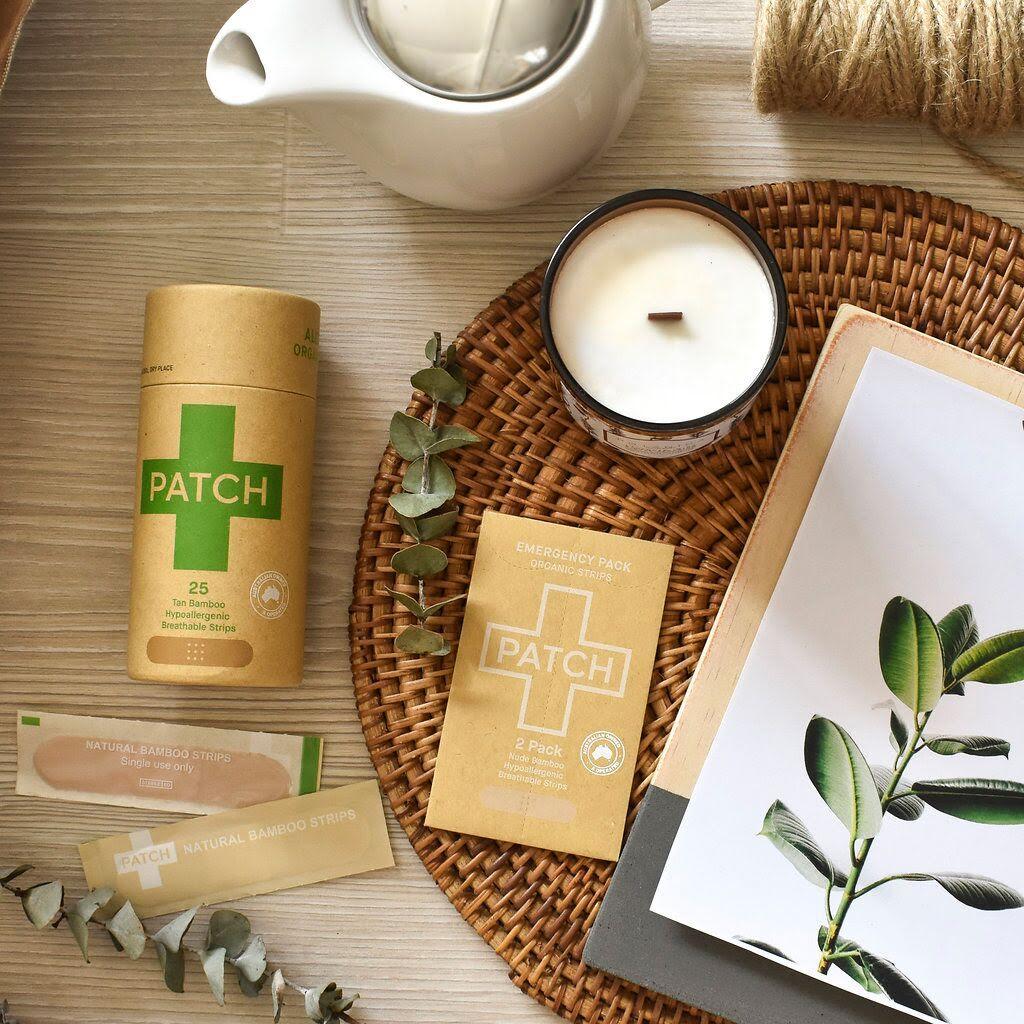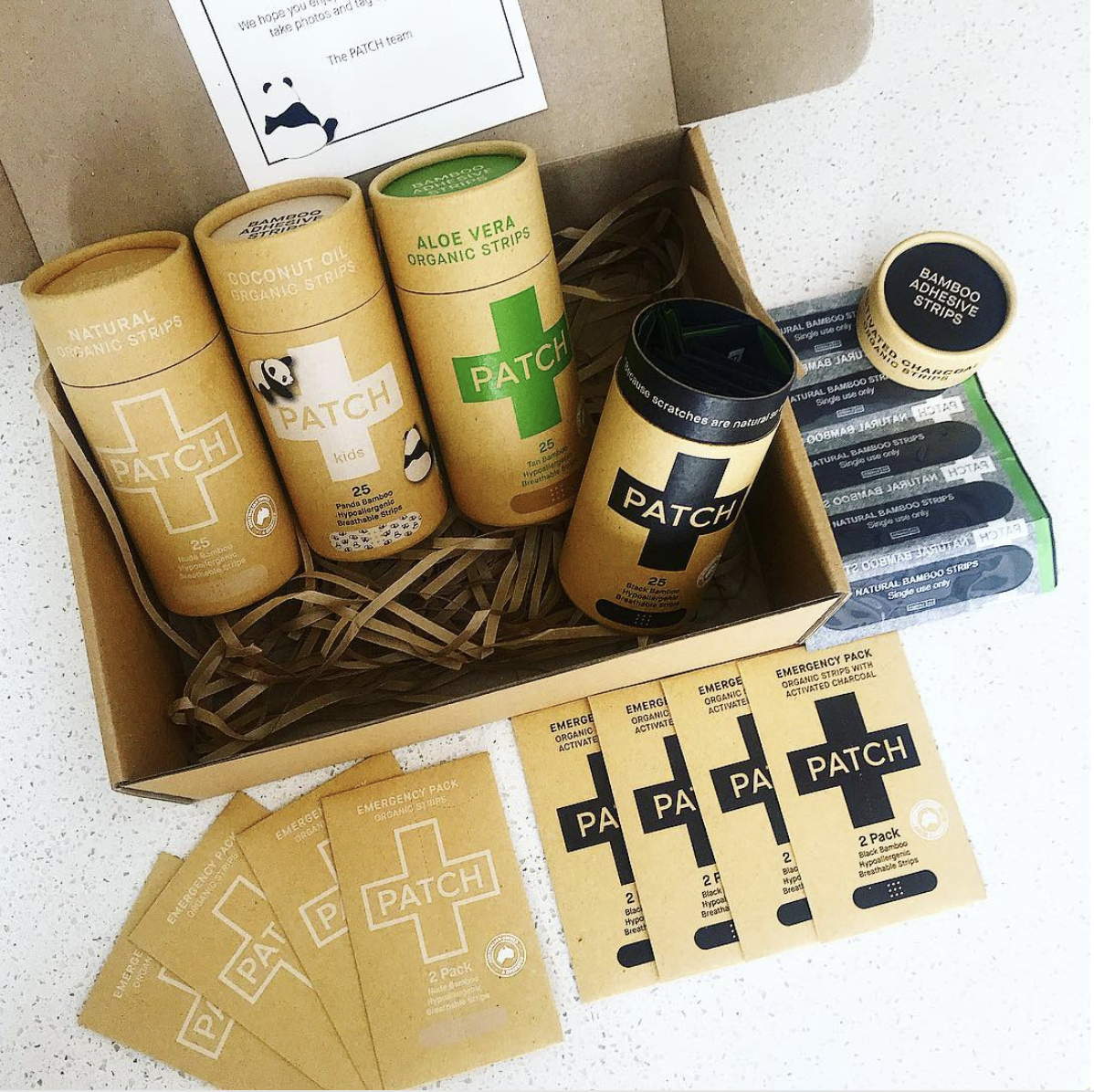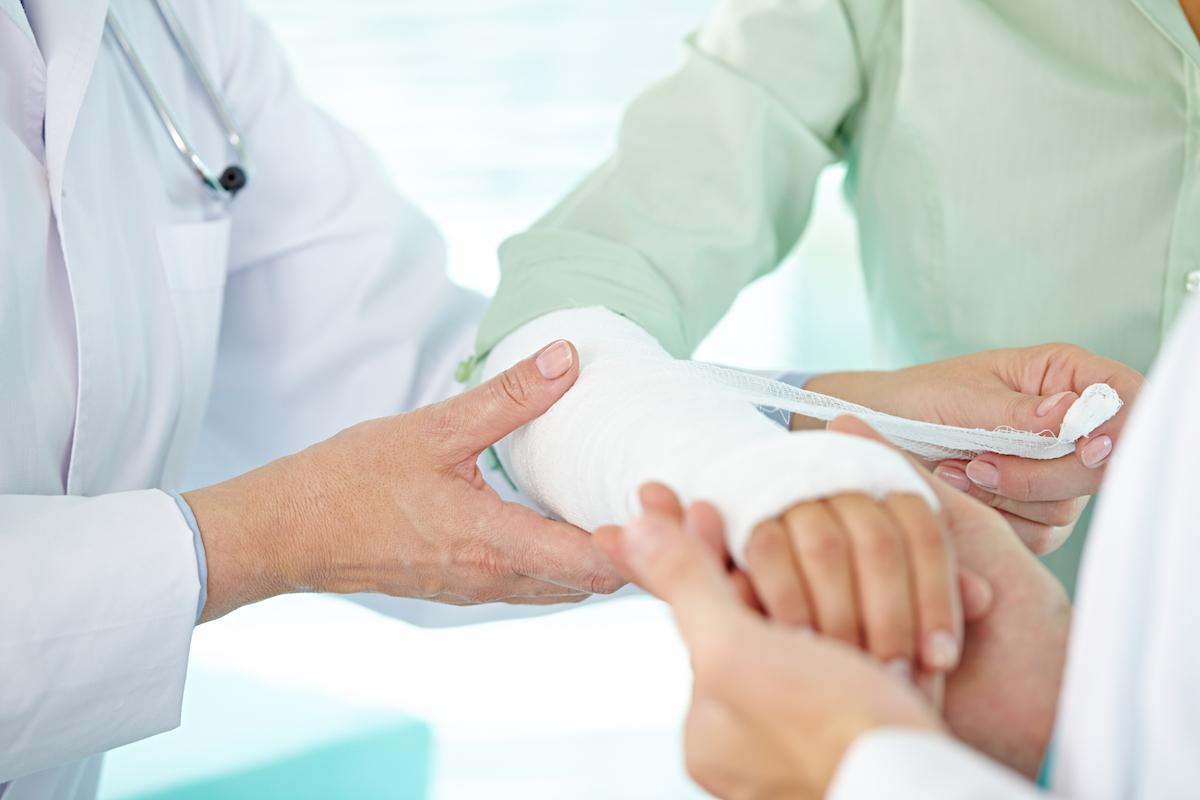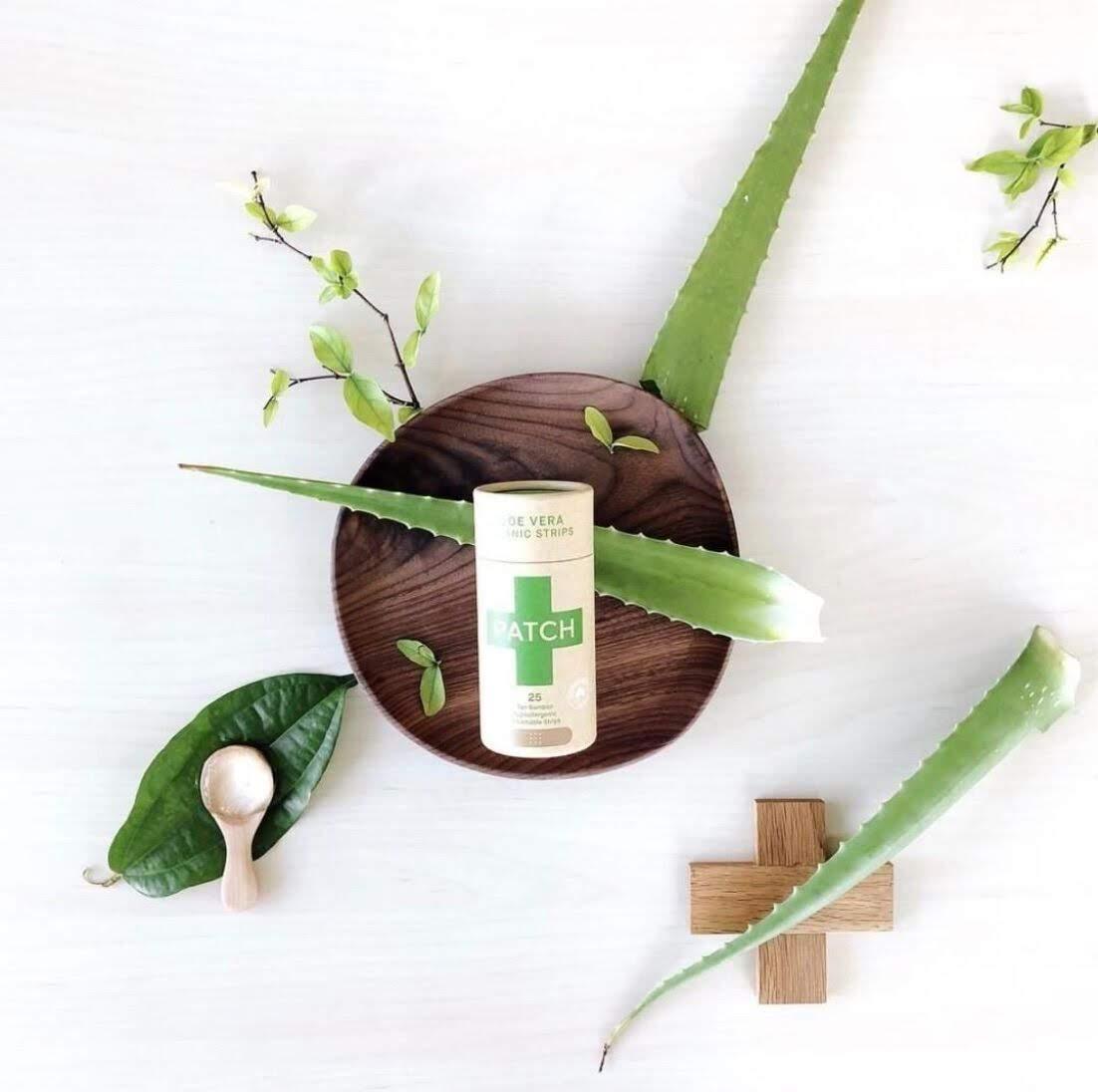Is Zero-Waste First Aid Possible? These Compostable Bandages Can Help
Have you ever tried compostable bandages?
Updated July 29 2019, 2:51 p.m. ET

If you’ve been transitioning to a zero-waste or low-waste lifestyle, you’ve probably noticed that there’s more single-use plastic than you thought there was in just about every part of your life. When it comes to everyday things like personal care, cooking, and cleaning, it can be pretty easy to swap things out for sustainable alternatives. But what about first aid?
Properly treating injuries and illnesses is extremely important, and should never be sacrificed simply to avoid creating waste. But luckily, we have a few tips that will help you care for cuts, bruises, headaches, and more as sustainably as possible.
Is It Possible to Keep First Aid Zero-Waste?
Remember that producing zero waste is just a goal, and not an absolute, black-and-white lifestyle. Reducing our waste is important, and it’s certainly possible to lower the impact of our first aid routines — but sometimes, the only viable or hygienic option uses plastic. And that’s perfectly OK. Health should always come first. That said, it is possible to make many of your first aid practices low-waste.
What Should I Put in an Eco-Friendly First Aid Kit?
Pre-made first aid kits are widely available, and certainly make things easier. So if you already have one, consider replacing any items that have been used up with sustainable alternatives, instead of buying an entirely new kit (more on that later).
And you’re in need of a first aid kit, consider going DIY! The blog Growing a Green Family has a great guide on putting together your own first aid kit that was created with sustainability in mind. One of the most important (and commonly-used) items in a first aid kit are bandages — and luckily, they’re the easiest item to swap for a zero-waste alternative.
Are There Zero-Waste or Compostable Band-Aids or Bandages?
The company Nutricare is responsible for PATCH bandages, which are 100 percent compostable (wrapper and paper backing included!), natural, kid-friendly, hypoallergenic, soothing, vegan, and cruelty-free. Plus, they’re newly available for purchase in CVS and on Amazon, making them fairly accessible. To learn all about PATCH strips, Green Matters interviewed Hammad Atassi, North American President of PATCH, via email.
This interview has been edited and condensed for clarity.

GREEN MATTERS: Tell me a little about PATCH.
HAMMAD ATASSI: PATCH is the world’s first compostable and 100 percent plastic-free wound care product. It is entirely made out of bamboo fibers and is infused with different natural minerals and oils for different types of wounds. PATCH is much less harmful to your skin than a regular bandage. PATCH uses a specially curated pressure sensitive adhesive (PSA) made from minerals and applied with Nano technology. PATCH is so great because one out of four people cannot use regular bandages because of the irritation and rashes it leaves on their skin.
GM: What makes PATCH a more eco-friendly option than regular bandages?
HA: What makes PATCH the more eco-friendly option starts at its production. PATCH is created using a Lyocell Production process, which is considered to be the most environmentally friendly method of manufacturing bamboo cloth fiber. All compounds used are non-toxic and much safer than commercial processing chemicals. In fact, 99.5 percent of the elements used in this process can be captured and recycled which avoids air and water pollution. Another reason PATCH is the more eco-friendly option is that PATCH is the only bandage that is 100 percent plastic-free, compostable, and biodegradable.
GM: What is PATCH made of? Are there any chemicals or ingredients in natural bandages that people should stay away from?
HA: PATCH is made out of 100 percent organic bamboo fiber with the added natural goodness of activated charcoal, aloe vera, and coconut oil. There are no chemicals or ingredients in PATCH people should stay away from, however other natural bandages may contain Merthiolate or Thimerosal or other chemicals that can cause irritation or rashes to the skin.

GM: Can the bandages and all their packaging go in a backyard compost bin? Will everything biodegrade if buried in the dirt, or does it need to specifically be composted to break down?
HA: Yes, the bandage, the paper backing, and the box can go in a backyard compost bin. In addition, the bandage, paper backing, and box are all biodegradable, so they can be buried and gone within a few weeks. PATCH’s biodegradability also allows it to be sea-friendly.
GM: Does PATCH have plans to make any other sustainable first aid products in the future? What about bandages in varying skin tones?
HA: Yes, Nutricare has plans to release a line of eco-friendly Sport Kinesiology Tape (KT Tape) called STRAP by the end of 2019. In regards to bandages in varying skin tones, no concrete plans have been made. However, the idea has been discussed and will surely be brought up again in the future.
GM: What other recommendations do you have for eco-friendly first aid?
HA: There really isn’t a lot out there that are 100 percent natural and fully eco-friendly. But some brands do better than others. I always recommend for consumers to do their research on the products and companies that they choose to support to make sure that those products align with their personal beliefs and commitments to natural and sustainable solutions… like PATCH!

In addition to bandages, a few other first aid items that are easy to make green include:
Eco-Friendly Medical Tweezers
Opt for stainless steel tweezers instead of plastic ones. Not only are they made from a sustainable material that could last for the rest of your life, but they’re less likely to break when you’re trying to remove a splinter from a screaming and squirming child.
Eco-Friendly Gauze Pads
Most gauze pads and gauze bandage rolls are made from cotton, meaning you can compost them after use. Just make sure the package says they are made from 100 percent cotton, since plastic-derived materials are not compostable.

Zero-Waste Hand Sanitizer and Wipes
EO sells biodegradable hand sanitizing wipes, made from bamboo and wood pulp. You can buy them grouped together in a package or a tub; but for a first aid kit, there are also individually wrapped ones. Single-use items are definitely not ideal in terms of waste, but are sometimes the most hygienic options when it comes to first aid.
Eco-Friendly Ice Packs for Injuries
If you are in need of new ice packs to keep in the freezer for at-home injuries (or lunch boxes!), consider a stainless steel ice pack instead of a plastic one.
But if you want to keep a breakable ice pack that can instantly get cold in your first aid kit, you may have to compromise in terms of waste. For example, these instant ice packs by Health Enterprises Inc. can be stored at room temperature in your first aid kit, and then once squeezed, will quickly turn cold. They won’t be able to do that magic trick ever again, but Health Enterprises Inc. labels these as reusable, and claims that they can then be put into the freezer for reuse. Other instant ice packs are specifically labeled single-use, so stay away from those if possible.
Zero-Waste Burn Care, Sunburn Care, and Bug Bite Care
For burns, cuts, bug bites, and sunburns, sometimes over-the-counter drugs, ointments, or creams from the pharmacy can be necessary. But when the wound isn't too bad, natural remedies can be effective, non-toxic, and low-waste.
For example, you can use the aloe from an aloe plant or aloe leaf to treat sunburns or burns; you can use ice to reduce swelling; and for burns that require a petroleum-based ointment, opt for a cruelty-free product like Lucas’ Papaw Ointment (other popular petroleum-based ointments unfortunately test on animals). Just make sure to always have your doctor check out any worrisome burns, bites, or rashes.

Zero-Waste Prescription Medication
If your doctor has prescribed you a prescription medication, all the thick plastic bottles they come in can start to pile up. While you should never stop taking medication without checking with your doctor, there are a few ways to make prescription medications less wasteful.
Depending on the type of medication you get, your doctor or pharmacist might be able to change your prescription to give you more pills at once, meaning you’ll consume less plastic bottles over time. After your bottles are empty, you can recycle them with bottle recycling.
If you have any leftover medication or prescription painkillers that your doctor tells you not to finish, don’t throw them in the trash or flush them down the toilet. Instead, you can safely dispose of them by taking them to a drug take-back bin, according to CNN. Many pharmacies offer these services, so check with your local pharmacy to see if they participate.
Eco-Friendly Painkillers
After sustaining an injury, your doctor may recommend you take an NSAID like ibuprofen or acetaminophen. Similarly to prescription medication, it’s usually best to get the largest bottle possible, especially if it’s a medication you know you will eventually use up. You can also research various medication companies to see if one better aligns with your values.
That said, some people stay away from NSAIDs, since overuse can cause side effects such as heartburn, stomach problems, and liver damage, according to Harvard Health Publishing. If you are looking for natural alternatives to painkillers, more and more people are turning to CBD and other hemp products.
Staying Zero-Waste at the Hospital or Doctor’s Office
At the doctor’s office or at a hospital, waste is usually unavoidable. Plus, it’s probably the last thing on most people’s minds when they’re at a nerve-wracking doctor’s appointment or checking into the hospital while ill — which is totally fair. But back in the day, doctors gave shots with reusable needles, they didn’t wear single-use exam gloves, they provided reusable medical gowns, and they used real cups to give patients ice chips.
If you are in the right state of mind during your next doctor or hospital visit, there are a few ways to lower your waste. For example: Before putting on a disposable exam gown, ask your doctor if it’s really necessary, or if it’s possible to examine you without it; after your appointment, take the paper that is lining the exam table with you and recycle it; and before someone hands you a drink or ice chips in a styrofoam cup, ask if it would be possible to get it in a glass or in your reusable bottle, if you have it with you.
That being said, you should never put zero-waste living ahead of proper medical care. Plastic sucks, but one of its best applications is in the medical field. As explained by TDI, plastic revolutionized the healthcare industry by helping improve sterility, prosthetics and artificial limbs, and child safety packaging. And according to MPO, plastic’s affordability has made many aspects of healthcare more accessible and widespread. So if you’re still creating waste in your first aid or medical routine, don’t sweat it. Just make sure to look at other areas of your life where you can more easily lower your impact.